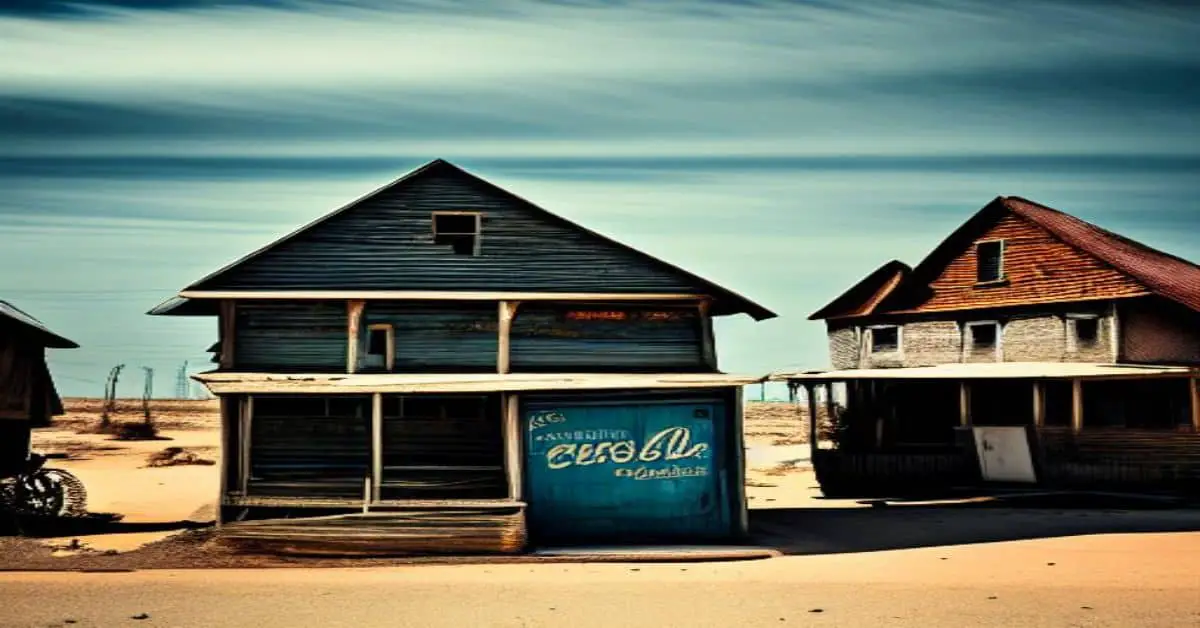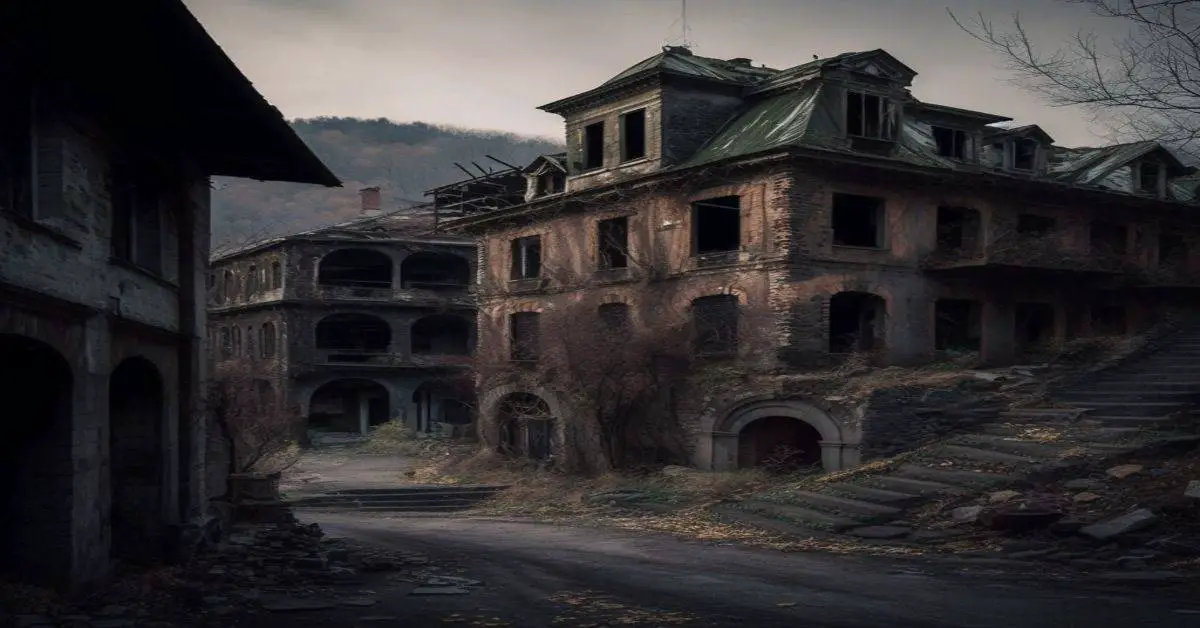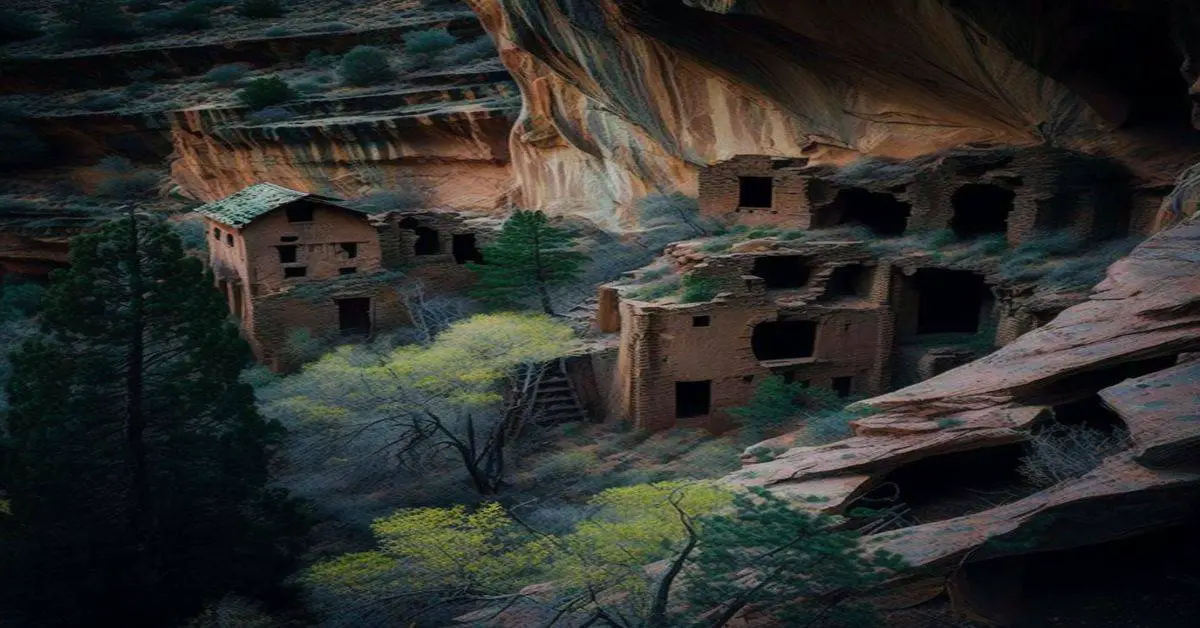Nestled in the heart of West Virginia lies the ghost town of Thurmond, a place once bustling with life and activity during the height of the Chesapeake Ohio Railway.
Today, it is a haunting reminder of the past, with remnants of its once-thriving community scattered throughout the town.
As visitors explore Thurmond, they will discover a time capsule of history that has remained virtually untouched by modern development.
Despite its decline, Thurmond’s downtown strip remains a testament to its past, with buildings facing the railroad tracks and a handful of residents still calling the town home.
Visitors can explore the larger buildings, including the train station, bank, saloon, hotel, and church, which have been preserved and restored as part of the national park.
With its rich history and eerie ambiance, Thurmond, West Virginia, offers a unique opportunity for visitors to step back in time and experience the haunting remains of a once-great railroad town.
Key Takeaways
- Thurmond is a ghost town in West Virginia that was once a thriving railroad town.
- The town has several well-preserved remains, including a depot, bank, saloon, hotel, homes, and a church.
- The train station has been restored and now serves as a museum.
- Visitors can learn more about Thurmond, West Virginia at the park visitor center and through the National Park Service-New River Gorge National River.
Location and History
Thurmond, a ghost town situated in West Virginia that was once a thriving railroad town, is now known for its haunting remains which include a depot, bank, saloon, hotel, about 20 homes, and a church. During the first two decades of the 1900s, Thurmond was a classic boomtown that enjoyed great prosperity. The town had the largest revenue on the Chesapeake Ohio Railway and was among the greatest railroad towns along the railway. However, with the advent of diesel locomotives, the town began a steady decline.
Today, Thurmond remains a link to the past and has many stories to tell. Despite its decline, Thurmond’s remains in the town are a testament to its rich history. The larger buildings in Thurmond include the train station, bank, saloon, hotel, and church, which remain standing as a reminder of the town’s former glory. The train station in the town has been restored and is now a museum. The town’s downtown strip faces the railroad tracks and no main street. Most of the houses in the town are situated up on the hill.
Today, the town of Thurmond remains surprisingly untouched by modern development.
Remnants of the Past
The abandoned structures in this West Virginia ghost town offer a glimpse into the past, showcasing the remnants of a once-prosperous railroad town. Among the abandoned architecture are several notable buildings that tell the story of Thurmond’s history. The train station, bank, saloon, hotel, and church still testify to the town’s former glory.
Despite the town’s abandonment, there has been a push for historical preservation in Thurmond. The train station, in particular, has been restored and now serves as a museum. The National Park Service also provides information about the town, allowing visitors to learn more about its rich history.
The abandoned structures and efforts towards historical preservation make Thurmond a unique and haunting destination that will leave a lasting impression.
Visitor Information
Accessing information about attractions and amenities in the area of Thurmond can assist in planning a peaceful and picturesque visit to the park.
The railroad depot in the town has been restored and serves as a park visitor center, providing a wealth of information about the town’s history.
The center offers exhibits, artifacts, and interpretive programs that help visitors understand the significance of Thurmond as a once-thriving railroad town.
Visitors can also get information about the park’s many hiking trails and other recreational opportunities.
Besides the visitor center, visitors can explore several other local attractions in Thurmond.
The National Park Service-New River Gorge National River provides more information about the town and the surrounding area.
Visitors can also tour the restored train station in Thurmond, which now serves as a museum.
The town’s downtown strip, facing the railroad tracks, offers a glimpse into the past, with several historic buildings that have been preserved.
Restoration efforts have ensured that the town remains a link to the past and continues attracting visitors interested in learning about the region’s rich history.
Frequently Asked Questions
What caused the decline of Thurmond after it was once a booming town?
Thurmond’s decline can be attributed to the advent of diesel locomotives, which decreased revenue on the Chesapeake Ohio Railway. Economic factors and social changes also affected the town’s steady decline.
Are there any notable events or stories associated with the town’s history?
What are the Lost Legends and Uncovering the Forgotten of Thurmond’s past? The town was a bustling railway town until the advent of diesel locomotives. Today, Thurmond’s remains include a restored train station, bank, saloon, hotel, church, and about 20 homes.
How has the natural environment surrounding Thurmond, West Virginia, changed?
The natural environment surrounding Thurmond has been impacted by industrialization and natural disasters. The town’s location along the Chesapeake Ohio Railway led to deforestation and pollution, while floods and landslides have altered the landscape.
Are there any ghost stories or paranormal activity associated with the town?
There have been reports of haunted happenings and supernatural sightings in Thurmond, a ghost town in West Virginia. However, there is no conclusive evidence to support these claims.
What efforts have been made to preserve and maintain Thurmond’s historical buildings and structures?
Preservation efforts and restoration projects have been undertaken by the National Park Service to maintain historical buildings and structures in Thurmond. These initiatives aim to preserve the town’s rich history and offer visitors an authentic glimpse into a bygone era.


